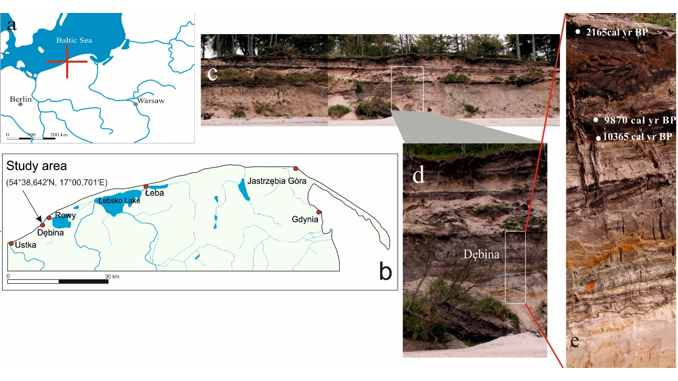
Paper category: Original research paper
Corresponding author: Monika Niska (monika.niska@apsl.edu.pl)
DOI: 10.1515/ohs-2018-0036
Received: February 28, 2018
Accepted: April 25, 2018
Full text: here
Citation (APA style):
Abstract
The paper presents sedimentary records acquired as part of the research on the coastal cliff located between 221.3 and 221.4 km of the Slovincian (Słowińskie) Coast near Dębina. Palynological and subfossil Cladocera analysis of sediments combined with geochemical data proves the existence of varying environmental conditions that occurred depending on the climate fluctuation. The Dębina reservoir was formed in the Late Glacial period. Mud and gyttja were deposited in an initially cold proglacial lake. Species of Cladocera identified in this period indicate a deeper oligotrophic reservoir. The end of the Late Glacial cooling inhibited the development of fauna in the reservoir. Climate change at the beginning of the Holocene improved the habitat conditions in the Dębina paleolake, which is reflected in the growth of zooplankton biodiversity and enrichment of the aquatic pollen content. We distinguished three phases that illustrate the evolution of the studied aquatic-mire ecosystem. In the following periods, the trophic level in the reservoir increased and significant water-level fluctuations led to periodic transformations of reservoirs into peat bogs. Gradually, the water-level lowering and the intensification of eolian processes led to terrestrialization of the paleolake.

Bądź pierwszy, który skomentuje ten wpis